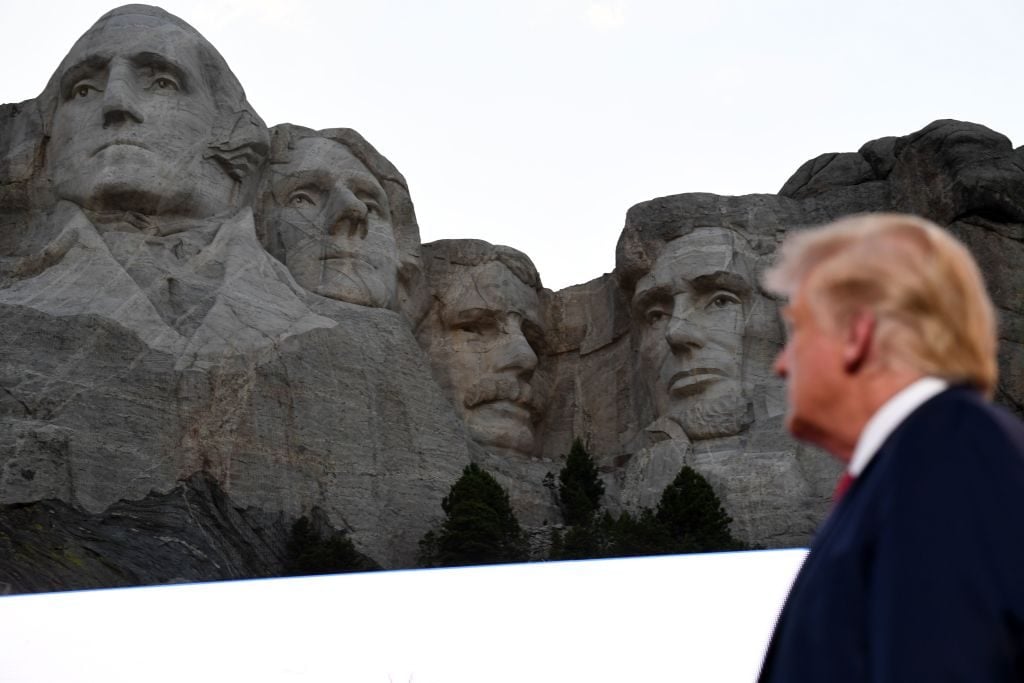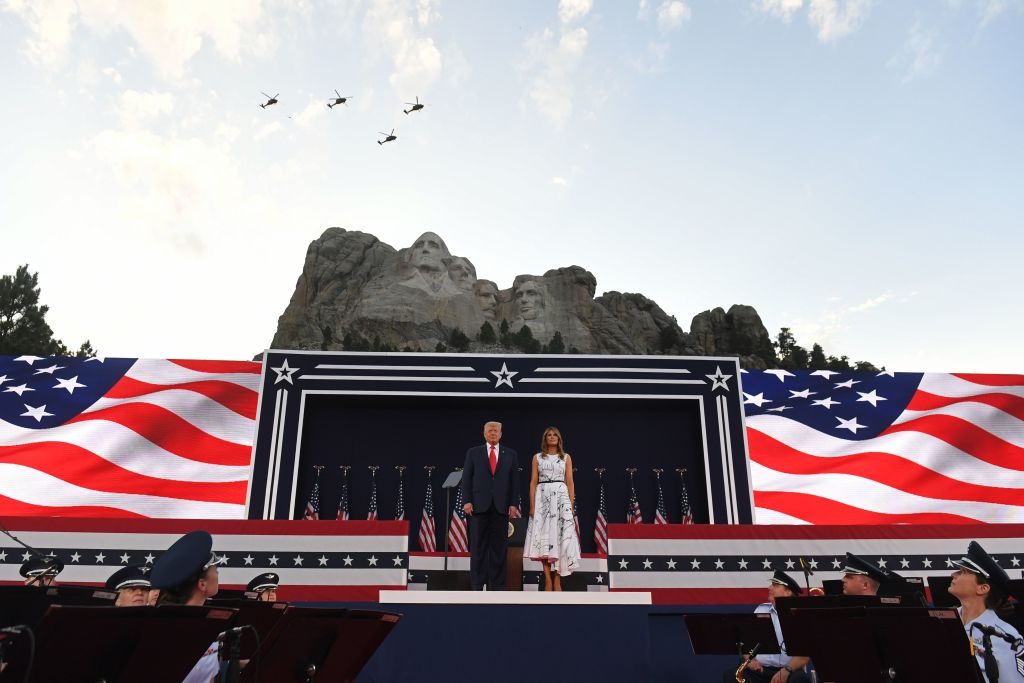Politics
After Rebuking Statue Toppling, President Trump Signs an Executive Order to Create a National Garden of Monuments to ‘American Heroes’
The monuments must be “lifelike or realistic” and not “abstract or modernist.”

The monuments must be “lifelike or realistic” and not “abstract or modernist.”

Taylor Dafoe

In a direct rebuke of protesters who have toppled controversial statuary around the country, President Donald Trump announced an executive order on Friday calling for the creation of a “National Garden of American Heroes.”
In a Fourth of July speech at the base of Mount Rushmore—a monument that is itself the subject of heated debate as two of the lionized presidents were slave owners—Trump described the garden as a “vast outdoor park that will feature the statues of the greatest Americans to ever live.”
Critics were quick to note the fascistic undertones of the event, pointing to the backdrop and Trump’s incendiary language.
“We will raise the next generation of American patriots,” the president said in his speech, which denounced what he called “new far-left fascism. We will write the next thrilling chapter of the American adventure. And we will teach our children to know that they live in a land of legends, that nothing can stop them, and that no one can hold them down.”
With the executive order comes the establishment of a “Task Force for Building and Rebuilding Monuments to American Heroes,” which now has 60 days to put forth plans for the garden.
The statues therein must depict “historically significant Americans,” a category defined as US citizens who have made positive contributions to the country throughout history. The statues must also be “lifelike or realistic,” not “abstract or modernist.” The order also explicitly states that Christopher Columbus—the subject of some of the most targeted statues in recent weeks—and others who lived prior to the American Revolution would qualify for their roles in exploring and colonizing the nation.

US President Donald Trump and First Lady Melania Trump arrive for the Independence Day events at Mount Rushmore National Memorial in Keystone, South Dakota, July 3, 2020. Photo: Saul Loeb / AFP via Getty Images.
The executive order lists some 30 historical figures who should be memorialized in the garden. Many are conventional inclusions, such as Benjamin Franklin, John Adams, and Abraham Lincoln; others, including Ronald Reagan, Billy Graham, and Antonin Scalia, will prove more controversial. The list also names several women and non-white figures, including Frederick Douglass, Dolley Madison, Harriet Tubman, Booker T. Washington, Amelia Earhart, Jackie Robinson, Martin Luther King, Jr., Susan B. Anthony, Harriet Beecher Stowe, and Christa McAuliffe.
The garden must be located near a city on a “site of natural beauty.” It aims to open by July 4, 2026, the order says.
“To destroy a monument is to desecrate our common inheritance,” the order reads. “These statues are not ours alone, to be discarded at the whim of those inflamed by fashionable political passions; they belong to generations that have come before us and to generations yet unborn.”
One week before his Mount Rushmore speech, President Trump signed an executive order that called for those who damage or vandalize federal monuments to be prosecuted to the “fullest extent possible under federal law.”